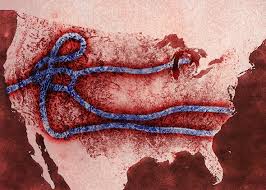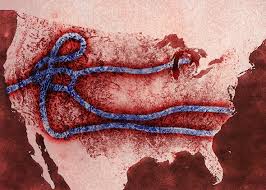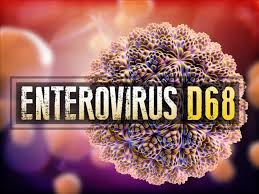 Our immune system is what keeps us from getting sick and it is our own personal defense weapon (so to speak). Keeping the immune system in top shape, especially during viral season or during a time of crisis is actually pretty easy and can be done through a variety of methods. Our diet, being touched (yes touched in a positive way) stress reduction, getting enough sleep, and two specific herbs for the immune system plus herbs and foods that fight stress called adaptogens. An article on stress and the immune system can be found here.
Our immune system is what keeps us from getting sick and it is our own personal defense weapon (so to speak). Keeping the immune system in top shape, especially during viral season or during a time of crisis is actually pretty easy and can be done through a variety of methods. Our diet, being touched (yes touched in a positive way) stress reduction, getting enough sleep, and two specific herbs for the immune system plus herbs and foods that fight stress called adaptogens. An article on stress and the immune system can be found here.
Research has constantly noted that the healthier the immune system, the less likely you are to be infected and if infected, the less severe the infection will be. This has been proven time and time again amongst those living with HIV/AIDS, Lyme disease and even people who ‘catch’ the flu.
Our dietary habits become job #1 when we start talking about strengthening our immune system. Sugar, especially processed sugar actually depresses our immune system. And this includes all those artificial ones. Alcohol, drug use, processed foods also are of concern limit these as much as possible.
From top down lets talk about some of THE best supportive foods for the immune system.
Yogurt. People who consume REAL yogurt or Kefir without all the artificial ingredients (and no, not the low fat stuff either!) on a regular basis report few sick days. How? The body’s white blood cell count increases greatly and the GI tract (where many infections take hold of first) remains very healthy due to its bacterial community being strong. Suggested 2wo 6-ounce servings a day.
Oats and barley. Studies have shown that animals (and we are animals ehmm) that eat a mix of oats and barley regularly have fewer infections, including influenza. Suggested at least one in your three daily servings of whole grains.
Garlic. Regular intake of garlic boost the immune functioning. Studies have shown that people eating or taking garlic had a much higher rate of staying healthy than those who didn’t. Suggested two raw cloves a day and add crushed garlic to your cooking several times a week.
Selenium-rich foods. These foods help to clear infections FROM the body. In descending order of how much is found, highest to lower.
Brazil nuts
Fish: Suggested at least two servings a week.
Tuna
Cod
Halibut
Sardines
Flounder
Salmon
Poultry:
Chicken
Turkey
Sunflower Seeds
Shellfish:
Oysters
Mussels
Shrimp
Clams
Scallops
Meat: Suggested a 3-ounce serving of lean beef provides about 30 percent of the Daily Value (DV) for zinc. That’s often enough to make the difference between deficient and sufficient. Not a beef person? Try zinc-rich oysters, fortified cereals, pork, poultry, yogurt, or milk.
Liver
Beef
Lamb
Pork
Eggs
Mushrooms
Whole grains
Wheat germ
Onions
Garlic
Asparagus
Broccoli
Tomatoes.
Remember how mom used to make Chicken Soup when you got sick? Well, it does work.
Black tea increases interferon levels which is what the immune system needs. Suggested several cups daily. To get up to five times more antioxidants from your tea bags, bob them up and down while you brew.
Zinc-containing foods…zinc plays an important role in the immune system. Zinc enhances many actions of the immune system including T cells. Higher amounts can be found in these foods:
Oysters
Wheat germ
Liver
Seeds
Sesame
Pumpkin
Squash
Watermelon
Roast beef
Dark chocolate
Cocoa
Lamb
Peanuts
Garlic
Chickpeas
Mushrooms
Ginger
Broccoli (and other braccea’s)
Red bell pepper
Oregano
So you can see that indeed you are what you eat. Simple dietary changes can make a big difference in your immune system and how well your body can fight off invaders.
And there are two specific herbs that very specifically reduce the cytokine cascade (known as an immune system response storm which can in and of itself be harmful) that many viruses cause and also just happen to cause the right immune system response to reduce viral invasion within the body.
#1 Astragalus
You can eat this root as food, take as a tincture, water extract, tea, or powder. Best way to use this herb is to cook with it or using as a tea as heat releases the best immune system boosters/viral fighters.
To make an tincture/water extract:
5 ounces of astragalus root (powder or shredded root)
12.5 ounces of water
Place the astragalus and water into a pot…bring to a boil. As soon as it boils put a lid on the pot and get off the heat, setting it aside to steep overnight. The next day put ALL of this into a jar and place the lid on the jar. Put aside for the next two weeks and if you remember, shake it once in a while. After two weeks, strain the powder or root out and then add 12.5 ounces of pure grain alcohol to the steeped water so it stays good for up to one year in a cool dark place. Shake well before using.
You can then pour this tincture/extract into smaller bottles for ease of use. Per Stephen Bhuner:
30-60 drops up to 4 times daily as a tonic
In chronic illness conditions take 1 tsp 4 times daily
As a preventative from viral infections 1 tsp 4-6 times daily
IF SICK take 1 tsp about every 3 hrs
To make a tea to drink through out the day put about 3 ounces of astragalus into 1 quart of hot water and allow to steep for approximately 3 hours, strain and drink. Any leftovers can be kept in the refrigerator for a few days.
Powder form: (which can be mixed into food, water or capsules)
Chronic conditions: 1 tablespoon 3 times per day
If sick, 2 tablespoons 3 times per day
From the book Herbal Defense you can make this broth using astragalus:
Ingredients:
3 cups water or vegetable broth
1 ounce astragalus
1 bulb (5-10 cloves) garlic
Salt/pepper to taste
Combine water/broth, astragalus, garlic and simmer for several hours until garlic is soft. Season with salt and pepper to taste. Consume all the broth if you feel something coming on or take a cup or two through out the week to prevent infection. Consume the cooked garlic separately or leave in the broth.
You can even use the powder when making barley, rice or anything else, the point is that you can use this herb in your cooking to kick up the immune system a notch.
Please note: those with auto-immune diseases may be sensitive to this herb. Those with late stage Lyme disease should avoid as it may make it worse.
Cordyceps is an herb that is used as a food. It is indicated that one should consume 3 to 9 grams per day. For preventative measures/strengthening 6 grams a day. If actively sick then 12 grams per day. Please keep in mind that most OTC capsules are 500 to 1,000 mg measurements. So if you get 500mg you will need to take 12 capsules to get 6 grams. 1000 mg capsules you will need to take 6 to get 6 grams.
So, eat healthy and reduce your stress. Food and herbs for your immune system are readily available to you, some directly help and others support. A few simple changes now might just keep you healthy!
As always, please keep in mind that I am not a professional healthcare provider, I am just very passionate about helping others help themselves and all information is taken directly from professional resources.
Stay safe and be prepared.
Survivingshtfmom
References:
http://www.health.harvard.edu/flu-resource-center/how-to-boost-your-immune-system.htm
http://www.organicgardening.com/living/9-foods-boost-immune-system
Herbal Antivirals by Stephen Harrod Buhner





Medical Research Org CIDRAP: Ebola Transmittable by Air
CIDRAP is warning that surgical facemasks do not prevent transmission of Ebola, and healthcare professionals (HCP) must immediately be outfitted with full-hooded protective gear and powered air-purifying respirators.
CIDRAP since 2001 has been a global leader in addressing public health preparedness regarding emerging infectious diseases and bio-security responses. CIDRAP’s opinion on Ebola virus is there are “No proven pre- or post-exposure treatment modalities;” “A high case-fatality rate;” and “Unclear modes of transmission.”
In April of 2014, CIDRAP published a commentary on Middle East respiratory syndrome (MERS) that confirmed the disease “could be an aerosol-transmissible disease, especially in healthcare settings,” similar to the known aerosol transmission capability of severe acute respiratory syndrome (SARS).
Although CIDRAP acknowledges that they were “first skeptical that Ebola virus could be an aerosol-transmissible disease,” they are “now persuaded by a review of experimental and epidemiologic data that this might be an important feature of disease transmission, particularly in healthcare settings.”
CDC’s published “Infection Prevention and Control Recommendations for Hospitalized Patients with Known or Suspected Ebola Virus Disease in U.S. Hospitals” states: “HCP should wear gloves, a gown, disposable shoe covers, and either a face shield that fully covers the front and sides of the face or goggles, and respiratory protection that is at least as protective as a NIOSH certified fit-tested N95 filtering facepiece respirator.”
N95 filters look like surgical masks and are defined by the U.S. Department of Labor as “disposable respirator” with a workplace protection factor (WPF) of 10. A 3M “qualified” N95 respirators rated to block 95% of airborne particles with a size greater in diameter than 5 microns is can cost as little as $.65 each.
However, the US National Institutes of Health reported in 2005 that 50% of bio-aerosols were found to be less than 5 microns in diameter. The NIH calculated that after correcting for dead space and lung deposition, “N95 filtering facepiece respirators seem inadequate against microorganisms.”
CIDRAP warns in regards to N95 respirators, “Healthcare workers have experienced very high rates of morbidity and mortality in the past and current Ebola virus outbreaks. A facemask, or surgical mask, offers no or very minimal protection from infectious aerosol particles.”
CIDRAP is now advising the CDC and WHO that proper “personal protective equipment (PPE) ensures that healthcare workers remain healthy throughout an outbreak.” Based on scientific research, CIDRAP recommends the minimum protection for healthcare professionals in high-risk settings is a “powered air-purifying respirator (PAPR) with a hood or helmet” that will filter 99.97% of all particles down to 0.3 microns in diameter.
But the minimum Internet-advertised price for a “qualified” 3M Veraflo respirator is $427.13, compared to about $.65 for an N95 facemask. With Liberia’s per capita GDP only $454 last year and the economy in shambles, there is no way the country’s healthcare professionals can afford to acquire the appropriate protective respirators.
Based on CIDRAP’s research and the fact that Ebola cases are projected to skyrocket, it seems irresponsible that the New York Times and other mainstream media outlets are downplaying the risks of Ebola transmission.
Less than two weeks ago, the NYT’s “Well” column responded to a reader’s question: “Can I get Ebola from public transportation?” with “Implying that Ebola is caught as easily as flu or colds would be untrue and inflammatory.” The “Well” column, again on October 13th, responded to another question: “I’m flying soon. What is the risk of contracting Ebola on a flight?” with “Top Ebola experts have said they would not expect to be infected even if they were sitting next to another passenger with Ebola – unless that passenger actually vomited or bled on them.”
As I pointed out last week at Breitbart News, the Black Death that killed a third of all people in Europe and the Middle East in the three years from 1337 to 1340 appears to have been a “hemorrhagic fever” similar to Ebola. CIDRAP’s warning that Ebola can be spread by “infectious aerosol particles,” such as breathing, means the pandemic should be expected to continue to accelerate.
Chriss Street suggests that if you are interested in Ebola, please read EXPERTS: EBOLA OUTBREAK, BLACK DEATH ‘PLAGUE’ SPREAD FROM AFRICA AS VIRUSES.